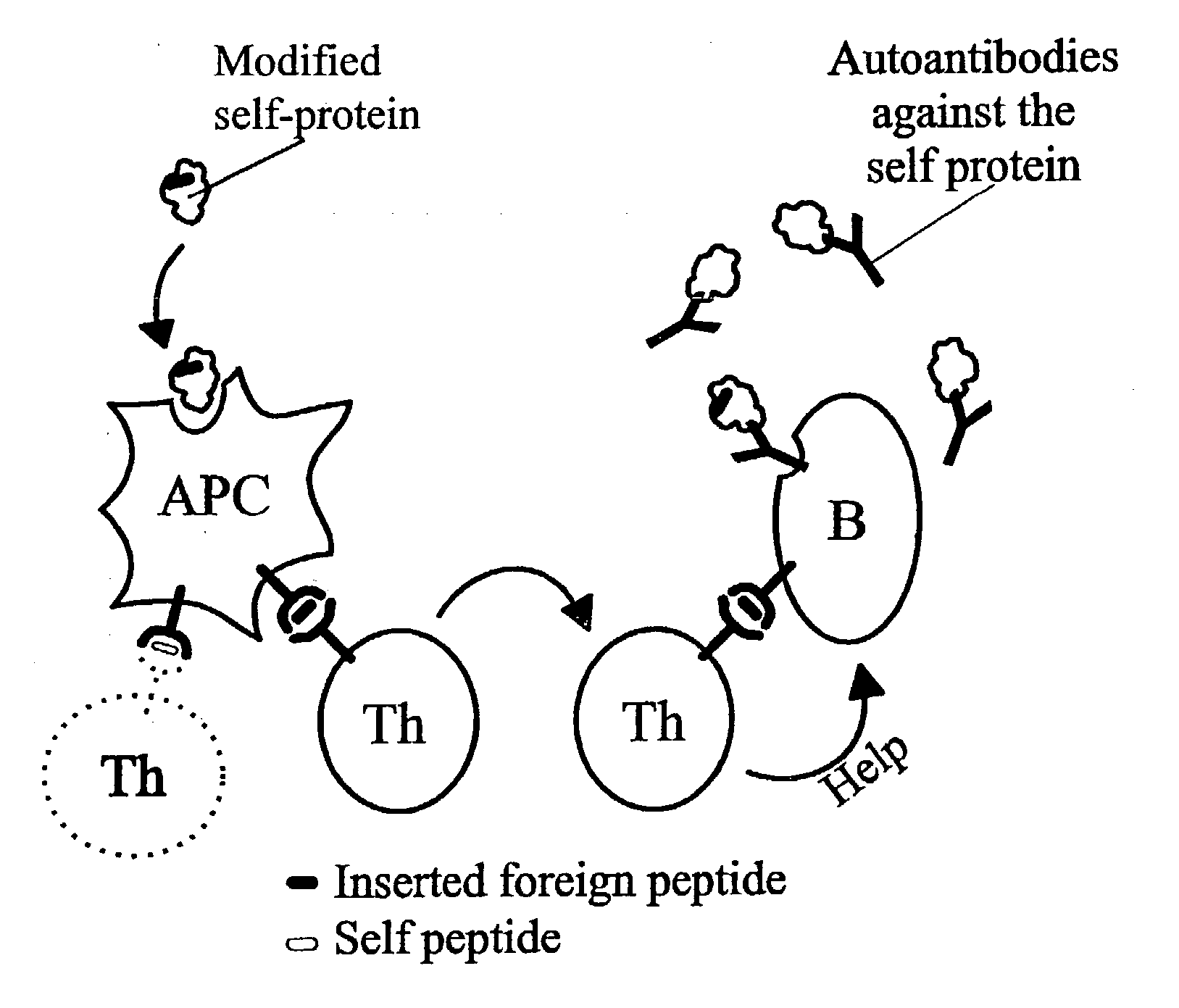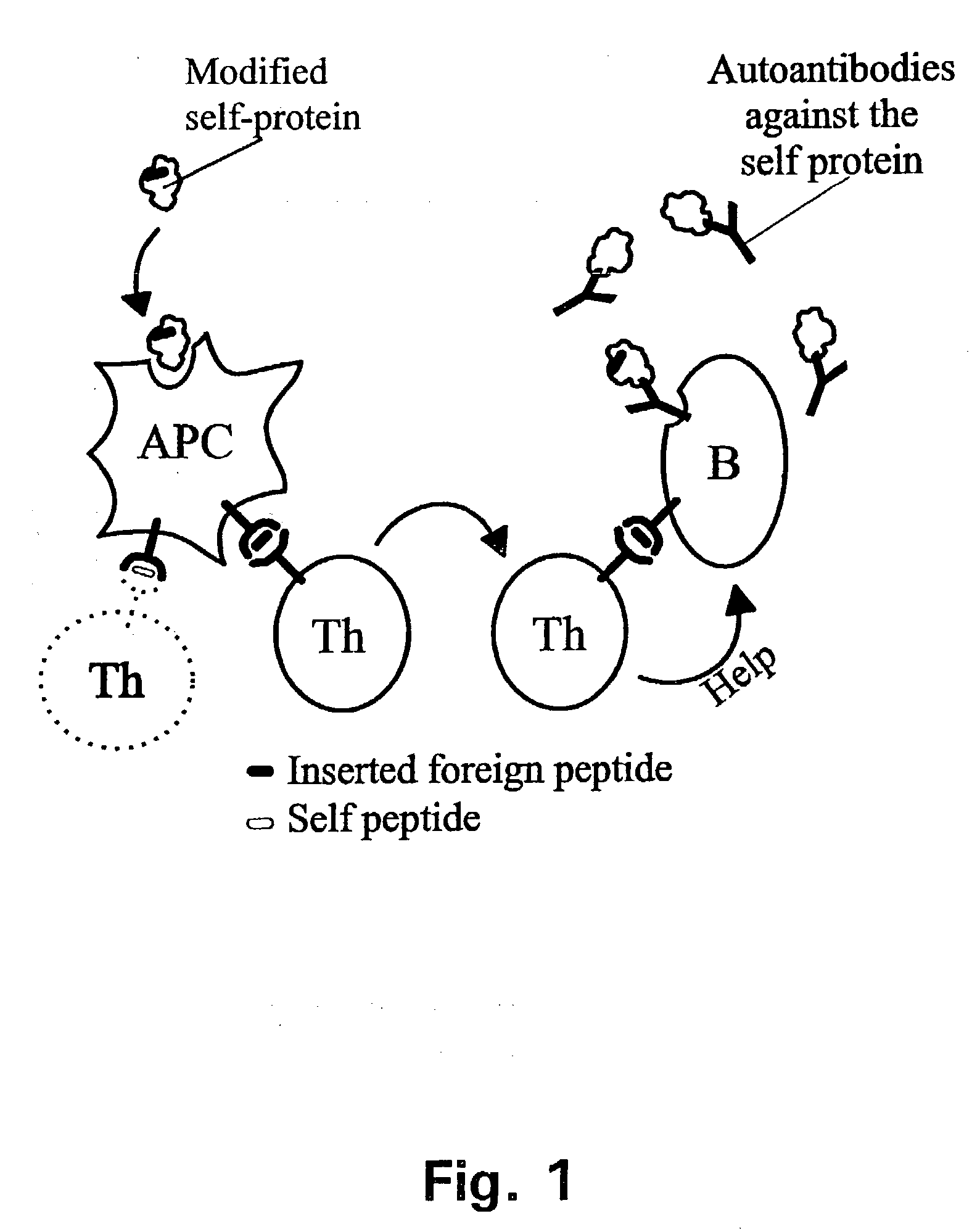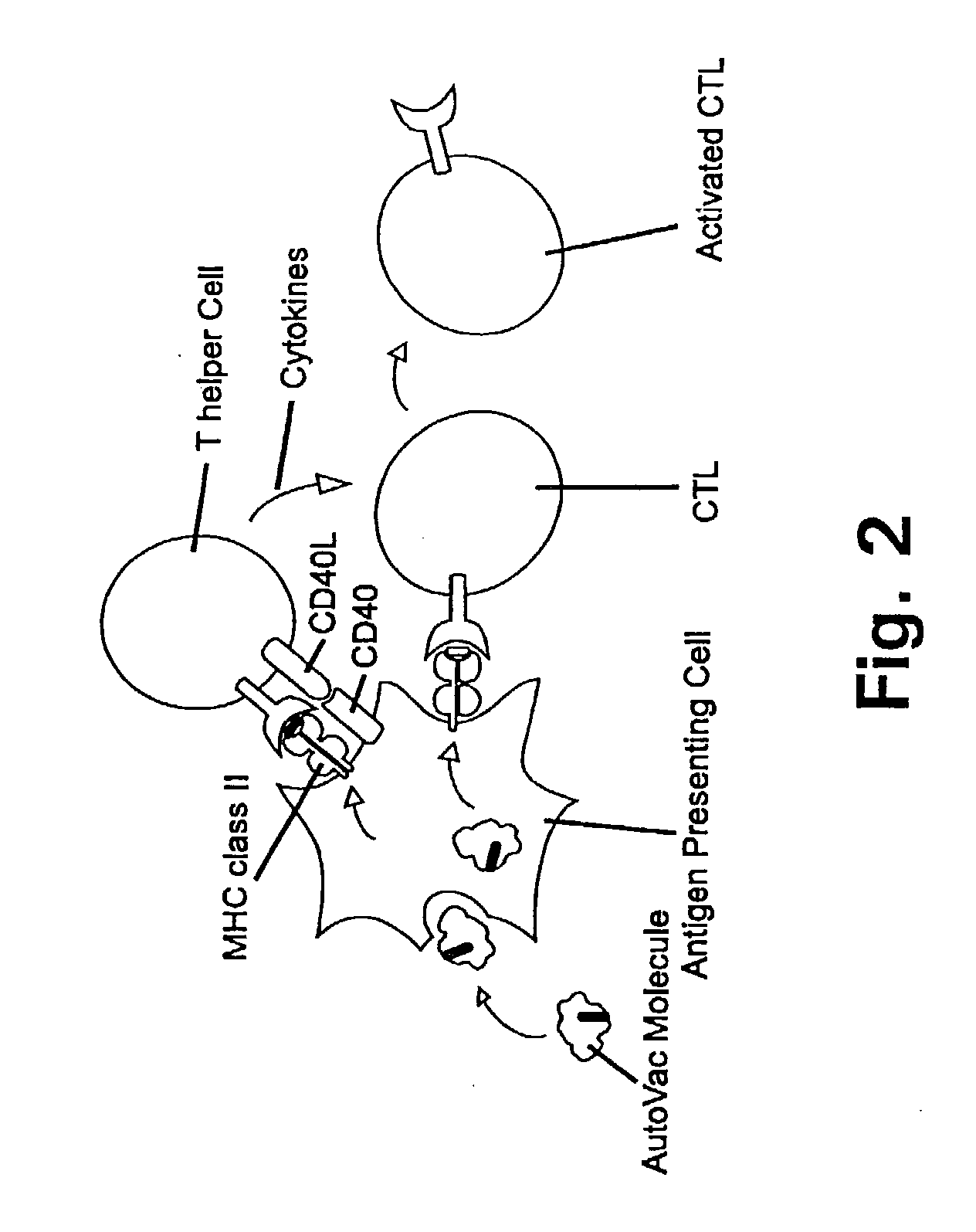Novel methods for therapeutic vaccination
a technology of vaccines and vaccines, applied in the field of vaccine vaccines, can solve the problems of monoclonal antibodies, less efficient treatment, and a large number of serious problems, and achieve the effect of effective treatmen
- Summary
- Abstract
- Description
- Claims
- Application Information
AI Technical Summary
Benefits of technology
Problems solved by technology
Method used
Image
Examples
example 1
[0312] Vaccination Against PSM
[0313] In the following it will be described how a human autovaccine against PSM can be developed through modification of the molecule by insertion of one or more promiscuous foreign T cell epitopes to reveal a panel of immunogenised PSM molecules.
[0314] The constructs will be tested for their ability to induce specific CTL responses against PSM bearing tumour cells. Furthermore, the constructs will be tested for their ability to induce antibodies which are cross-reactive with the native parts of the PSM molecule. Subsequently, in several in vitro assays and in vivo animal models the efficacy of the different constructs will be evaluated. The induced antibodies will be tested for their ability to activate complement via the classical pathway and to initiate ADCC via Fc-receptors. Finally, the different molecules will be tested in animal models of human prostate cancer.
[0315] Strategy in Designing a PSM Autovaccine
[0316] Briefly, the PSM vaccination plan...
example 2
[0490] Production of a Her2 Autovaccine
[0491] A human autovaccine against Her2 can be developed through modification of the molecule by insertion of one or more promiscuous foreign T cell epitopes to reveal a panel of immunogenised Her2 molecules. These modified proteins will be tested for their ability to induce antibodies which are cross-reactive with the native parts of the Her2 molecule. Subsequently, in several in vitro assays and in vivo animal models, the efficacy of the different constructs (as may be the case with the DNA vaccinnation) and modified proteins will be evaluated. The induction of specific CTL responses against Her2 bearing tumour cells will be analysed. Also, the induced antibodies will be tested for their ability to activate complement via the classical pathway and to initiate ADCC via Fc-receptors. Finally, the different modified molecules will be tested in animal models of human breast cancer to examine their effects on the treatment of tumours.
[0492] Immuno...
example 3
[0536] Production of an Anti-FGF8b Vaccine
[0537] In the following it will be described how a human autovaccine against FGF8b can be developed through modification of the molecule by insertion of one or more promiscuous foreign T cell epitopes to reveal a panel of immunogenized "FGF8b" molecules. The constructs will be tested for their ability to induce antibodies that are cross-reactive with the authentic parts of the FGF8b molecule. Subsequently, in several in vitro assays and in vivo animal models the efficacy of the different constructs will be evaluated. The induced antibodies will be tested for their ability to activate complement via the classical pathway and to initiate ADCC via Fc-receptors. Finally, the different molecules will be tested in animal models of human prostate and breast cancers.
[0538] Construction of an Autovaccine Against FGF8b
[0539] Due to the complete identity of the murine and human FGF8b polypeptides, all constructs can be used for experiments in both huma...
PUM
| Property | Measurement | Unit |
|---|---|---|
| Time | aaaaa | aaaaa |
| Volume | aaaaa | aaaaa |
| Fraction | aaaaa | aaaaa |
Abstract
Description
Claims
Application Information
 Login to View More
Login to View More - R&D
- Intellectual Property
- Life Sciences
- Materials
- Tech Scout
- Unparalleled Data Quality
- Higher Quality Content
- 60% Fewer Hallucinations
Browse by: Latest US Patents, China's latest patents, Technical Efficacy Thesaurus, Application Domain, Technology Topic, Popular Technical Reports.
© 2025 PatSnap. All rights reserved.Legal|Privacy policy|Modern Slavery Act Transparency Statement|Sitemap|About US| Contact US: help@patsnap.com



